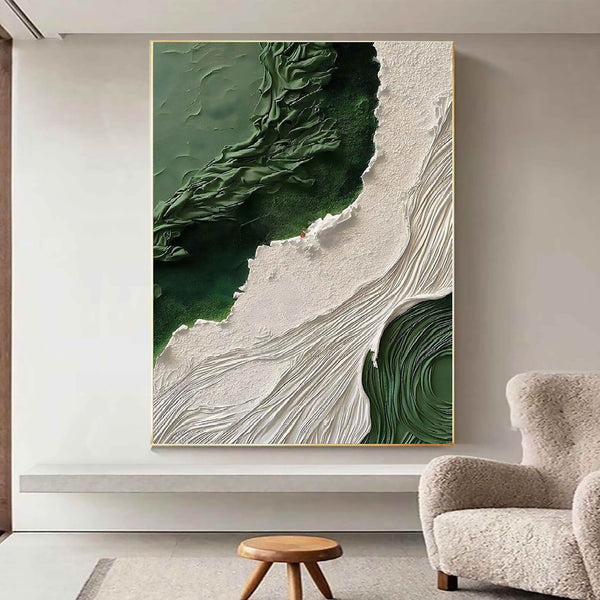The Art of Installations
Installations are a unique form of contemporary art that transcends traditional boundaries and engages viewers in immersive experiences. These dynamic and interactive artworks are created to transform physical spaces, evoke emotions, and provoke thoughts.
Immersive Environments
Installations often involve a combination of various elements such as sculptures, multimedia projections, sound, light, and technology to create immersive environments that captivate the senses. Viewers are encouraged to explore the space, interact with the artwork, and become part of the artistic narrative.
Conceptual Expression
Artists use installations as a medium for conceptual expression, addressing social issues, personal stories, or abstract ideas. By manipulating space and materials, they communicate complex themes in a visually compelling way that encourages reflection and dialogue.
Interactive Engagement
One of the defining features of installations is their interactive nature. Viewers are invited to engage with the artwork through touch, movement, or participation. This interactive aspect blurs the line between observer and participant, creating a dynamic relationship between the artwork and its audience.
Public Art Installations
Public art installations have gained popularity as a means of bringing art outside gallery walls and into everyday spaces. These large-scale artworks transform public areas into cultural hubs, sparking conversations and fostering community engagement with art.
The Evolution of Installations
Over the years, installations have evolved to incorporate new technologies such as virtual reality, augmented reality, and interactive digital platforms. These advancements have expanded the possibilities for artists to create immersive experiences that push the boundaries of traditional art forms.
In conclusion, installations represent a dynamic form of artistic expression that challenges conventions and invites viewers to experience art in innovative ways. Through their ability to transform spaces and engage audiences on multiple levels, installations continue to shape the contemporary art landscape.
Exploring the Transformative Power of Art Installations: 9 Benefits of Immersive and Interactive Experiences
- Engages viewers in immersive experiences
- Transforms physical spaces into dynamic artworks
- Provokes thoughts and emotions
- Communicates complex themes visually
- Encourages interactive engagement with art
- Creates a unique and memorable experience for viewers
- Fosters community engagement with public art installations
- Pushes the boundaries of traditional art forms
- Utilizes new technologies to enhance artistic expression
Challenges of Complex Installations: Logistics, Maintenance, and Accessibility
- Logistical challenges in setting up and dismantling complex installations can be time-consuming and require specialized skills.
- Maintenance of installations, especially outdoor or interactive ones, may be costly and require regular upkeep to ensure longevity.
- Limited accessibility for certain audiences due to physical barriers or restrictions in public spaces where installations are displayed.
Engages viewers in immersive experiences
Installations offer a compelling pro by engaging viewers in immersive experiences that transcend passive observation. By creating dynamic and interactive environments, installations invite viewers to step into a world where they can explore, interact, and connect with the artwork on a deeper level. This immersive quality not only captivates the senses but also fosters a sense of participation and emotional engagement, making the artistic experience more profound and memorable for the audience.
Transforms physical spaces into dynamic artworks
Installations have the remarkable ability to transform physical spaces into dynamic artworks that transcend traditional boundaries. By integrating various elements such as sculptures, multimedia projections, sound, and light, installations breathe new life into ordinary environments, turning them into immersive and captivating experiences. This transformative power not only reshapes the aesthetics of a space but also invites viewers to engage with the artwork in a way that is both interactive and thought-provoking. Through this process of transformation, installations blur the line between art and its surroundings, creating a dynamic interplay that enriches both the space and the viewer’s perception of it.
Provokes thoughts and emotions
Installations have a remarkable ability to provoke deep thoughts and evoke powerful emotions in viewers. By immersing individuals in a multi-sensory experience, installations challenge preconceived notions, stimulate introspection, and spark meaningful conversations. The fusion of visual elements, soundscapes, and interactive components creates a dynamic environment that resonates with the audience on an emotional level, encouraging reflection and empathy. This unique aspect of installations allows artists to communicate complex ideas and narratives in a profound and impactful way, fostering a deeper connection between art and the human experience.
Communicates complex themes visually
Installations offer a compelling advantage in the art world by effectively communicating complex themes visually. Through the strategic use of space, materials, and interactive elements, artists can convey intricate ideas and emotions in a visually stimulating manner. By immersing viewers in a multisensory experience, installations provide a platform for exploring nuanced concepts and sparking meaningful conversations without relying solely on traditional forms of verbal or written communication. This visual storytelling approach not only enhances the aesthetic appeal of the artwork but also invites viewers to interpret and engage with the underlying themes on a personal level, fostering deeper connections and understanding.
Encourages interactive engagement with art
Installations, with their emphasis on interactive engagement, offer a compelling and immersive way for viewers to connect with art. By encouraging tactile exploration, movement, and participation, installations break down the traditional barriers between artwork and audience. This interactive aspect not only enriches the viewer’s experience but also fosters a deeper understanding and appreciation of the artistic intent behind the installation. Through hands-on engagement, viewers become active participants in the artistic dialogue, creating a dynamic and memorable encounter with art that transcends passive observation.
Creates a unique and memorable experience for viewers
Installations have the remarkable ability to create a truly unique and unforgettable experience for viewers. By immersing audiences in a carefully crafted environment that combines various elements such as sculptures, multimedia projections, sound, and interactive components, installations engage the senses and emotions in a way that traditional art forms cannot. The interactive nature of installations encourages viewers to actively participate and explore the artwork, leading to a deeper connection and a lasting impression. This immersive experience leaves a memorable impact on viewers, sparking curiosity, reflection, and dialogue long after they have encountered the installation.
Fosters community engagement with public art installations
Public art installations play a crucial role in fostering community engagement by bringing art directly into public spaces where people live, work, and gather. These installations serve as cultural landmarks that spark conversations, promote dialogue, and create shared experiences among diverse community members. By making art accessible to everyone, public installations not only enrich the aesthetic appeal of a city but also strengthen the sense of identity and pride within the community. Through interactive and thought-provoking artworks, public art installations encourage people to connect with their surroundings, each other, and the artistic expressions that reflect their shared values and aspirations.
Pushes the boundaries of traditional art forms
Installations have the unique ability to push the boundaries of traditional art forms by breaking free from conventional constraints and exploring new avenues of artistic expression. Through innovative use of space, materials, and technology, installations challenge established norms and redefine the way art is experienced. By transcending the limitations of two-dimensional artwork and inviting viewers to engage with art in a multisensory environment, installations open up endless possibilities for creativity and interpretation. This pro of installations not only expands the horizons of artistry but also encourages artists and audiences alike to embrace experimentation and embrace the evolution of contemporary art.
Utilizes new technologies to enhance artistic expression
Installations embrace the use of new technologies to elevate artistic expression to new heights. By integrating virtual reality, augmented reality, interactive digital platforms, and other cutting-edge tools, artists can create immersive experiences that push the boundaries of traditional art forms. These technological advancements not only enhance the visual impact of installations but also provide innovative ways for artists to engage with their audience on a deeper and more interactive level. The fusion of art and technology in installations opens up a world of possibilities for creative exploration and allows artists to experiment with novel techniques that captivate viewers and redefine the boundaries of contemporary art.
Logistical challenges in setting up and dismantling complex installations can be time-consuming and require specialized skills.
Logistical challenges in setting up and dismantling complex installations can present a significant drawback for artists and organizers. The intricate nature of these artworks often demands meticulous planning, coordination, and expertise to ensure a successful execution. From transporting large-scale components to navigating technical requirements, the process can be time-consuming and resource-intensive. Specialized skills are essential to handle the complexities involved, adding an additional layer of difficulty for artists seeking to bring their vision to life through installations. Despite the creative rewards they offer, the logistical hurdles can pose a considerable barrier to realizing these ambitious artistic endeavors.
Maintenance of installations, especially outdoor or interactive ones, may be costly and require regular upkeep to ensure longevity.
The maintenance of installations, particularly outdoor or interactive ones, can pose a significant challenge due to the potential high costs involved and the need for consistent upkeep to preserve their longevity. Outdoor installations are exposed to various environmental factors such as weather conditions, natural wear and tear, and vandalism, which can impact their structural integrity over time. Interactive installations may require regular technical maintenance to ensure that all components function properly and provide a seamless user experience. Investing in ongoing maintenance is crucial to safeguarding the quality and durability of installations, ensuring that they continue to engage audiences effectively for years to come.
Limited accessibility for certain audiences due to physical barriers or restrictions in public spaces where installations are displayed.
Limited accessibility for certain audiences due to physical barriers or restrictions in public spaces where installations are displayed poses a significant challenge in the realm of art installations. While installations aim to engage viewers in immersive experiences, the presence of obstacles such as stairs, narrow doorways, or lack of wheelchair access can exclude individuals with mobility impairments from fully participating in the artistic encounter. This limitation not only hinders inclusivity but also diminishes the potential impact of the artwork on a diverse audience. Addressing these accessibility concerns is crucial to ensure that installations can be enjoyed and appreciated by all individuals, regardless of their physical abilities.




